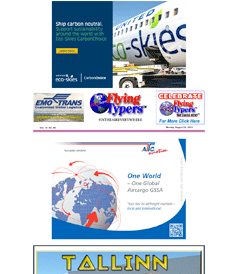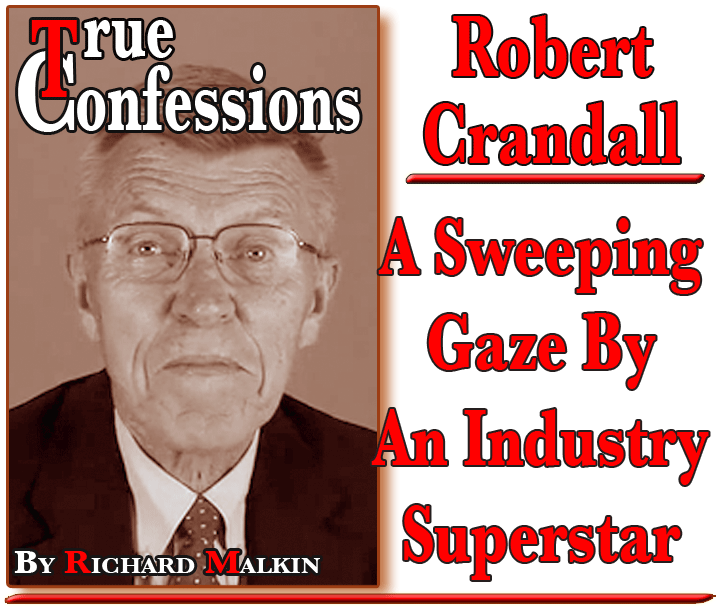
I
believe it was during George Shipman’s captaincy of
American Airlines’ cargo effort that we met in Fort
Worth to untangle a couple of cargo issues. We didn’t
get very far when Robert L. Crandall, then president, popped
in to say hello. He didn’t stay long, but long enough
to deliver a cheery rah-rah picture of AA Cargo in hard drive.
Less than a week later, American made nationwide headlines
with the grounding of its transcontinental freighter system.
Pure and simple economics had placed the cargo belly in a
comeback role.
The air-shipping market was
not adequate for the operation of a pair of side-by-side cargo
services—one in aircraft designed for the exclusive
carriage of freight, and the other for stowing traffic in
growing space beneath passengers’ feet. There ensued
a brief period of protests, especially by volume users. Notably
Julius B. Kupersmit, president of Containair Corporation,
a close observer of the air freight industry, deplored the
cessation of all-cargo service, pointing out that you can’t
have two hares with a single dog. But he immediately conceded
that the conduct of business does not necessarily follow attractive
adages, underscoring this by quoting Ben Franklin’s
advice to “drive thy business or it will drive thee”.
Crandall’s decision was a critical example of what he
later referred to as an “always interesting aviation
business”.
In the paragraphs that follow,
it is Bob Crandall the businessman in full voice. Not once
is the word “cargo” or “freight” or
“forwarder” mentioned. It is an experiential wrap-up
of decades of high-level activity in an industry that is overwhelmingly
passenger-oriented. Yet-unmentioned-between and within some
issues, the fortunes of the cargo business are included and
real.
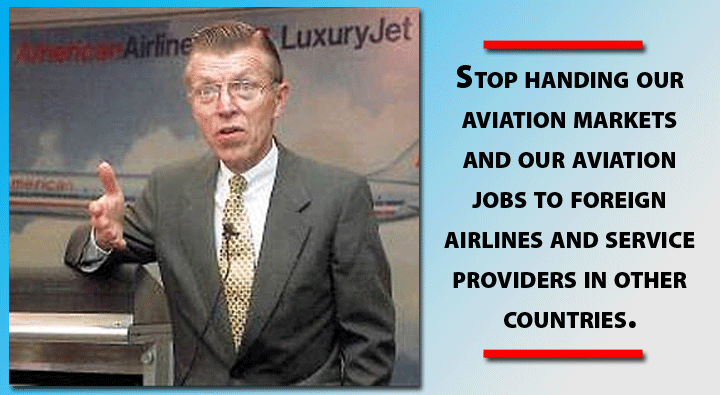
Last spring, Crandall, now 17
years since retirement as chairman and executive officer of
AMR Corporation and American Airlines, opened wide his experience
and opinions in a riveting address as central part of the
Wings Club Foundation’s Harold R. Harris “sight”
lecture.
A native of Westerly, R.I.,
he was a graduate of the University of Pennsylvania’s
Wharton School in 1960.
Had he noted any significant
changes in his post-airline years? Absolutely. The most dramatic
was the “long anticipated consolidation of multiple
major carriers,” morphing a highly intensive competitive
industry into a sellers’ market. Four megacarriers control
about four-fifths of U.S. originating passengers. Speaking
academically, Crandall held that “the bare-knuckle brawls”
since deregulation are largely nonexistent.
Still, change has been on leaden
feet. While air transportation economics has undergone important
change, he hasn’t seen much change since retirement.
The business, he said, “remains uniquely capital- labor-
and fuel-intensive. Because the federal aviation administration
operates the national airspace system, he maintained that
“airlines are uniquely and adversely impacted by the
political conflicts that seem endlessly to rage in Washington”.
Is more airline consolidation
in the wind? Crandall thinks so. Behind his thinking is the
record or “favorable economic impacts” further
consolidation, he said was “likely”. Crandall
added: “In addition to continued growth and consolidation,
I think we will see more intensive use of automated tools
and techniques to cut costs and facilitate the customer experience.”
Bob Crandall, who The Wall
Street Journal credited with “having changed the
way the world flies,” warned that if evolution displaced
three trends—growth, consolidation and automation—“the
industry’s major problems are going to go unresolved.
These problems were identified as unhappy customers, inadequate
and uncertain funding sources, an outmoded airspace management
system, deteriorating airports, and an intrusive, overpriced
security system—nor provide “proactive responses
to other problems, including unfair international competition.”
How can one do a better job
of satisfying customers? This, said Crandall, is one of the
problems the industry should be giving great thought. In his
candid opinion, bluntly stated, “there is little doubt
that many airline customers are deeply dissatisfied”.
According to the American Customer Satisfaction Index, airlines
rank 20th out of 22 industries tracked. American’s ex-chief
drew on a list of these dissatisfactions: indifferent employees,
hidden fees, late and cancelled flights, cramped seating,
delayed and lost luggage, substandard frequent flyer programs,
fewer service options, and incompetent complaint resolution.
He confessed thinking it unlikely that airline customers “will
ever think as well of us as well as we think they should”.
In the business of air shipping,
price is unquestionably the customer’s first concern.
Deep in the same mold, the price of passenger flight “was
and remains the driver”—which ultimately leads
to carriers installing more seats in their planes. But Crandall
didn’t accept seating arrangements as a final solution,
stating:
“Acknowledging the public’s
preference for price over nicety does not preclude using technology
to improve the product and make the travel experience more
enjoyable. In-flight connectivity, for example, becomes a
reality on most domestic aircraft, and is beginning to appear
on international flights as well. While connectivity is highly
valued by those who must stay connected for business purposes,
it’s utility for non-business travelers, for airline
crews and for the airlines themselves has been limited to
date by the slow speeds imposed by inadequate bandwidth and
early stage technologies. In the next few years, technological
advances now being perfected and installed by GoGo and others—I
am a director of GoGo—will greatly increase the speed
and utility of both air-to-ground satellite linkages. As speeds
increase, crews will be able to do a better job of serving
customers, passengers will be able to enjoy more entertainment
options, and airlines will be able to gather more information
about planes in flight than has been possible in the past.”
Anticipated results: fewer delays,
lower costs, increased customer satisfaction.
To achieve the goal of improved
service, Crandall suggested that the industry turn its back
on some of the outsourcing and allocate a little more “cash
flow to labor and reduce capital a bit. As he sees it, this
act would generate hefty public approval while ticking up
employee and customer benefits.
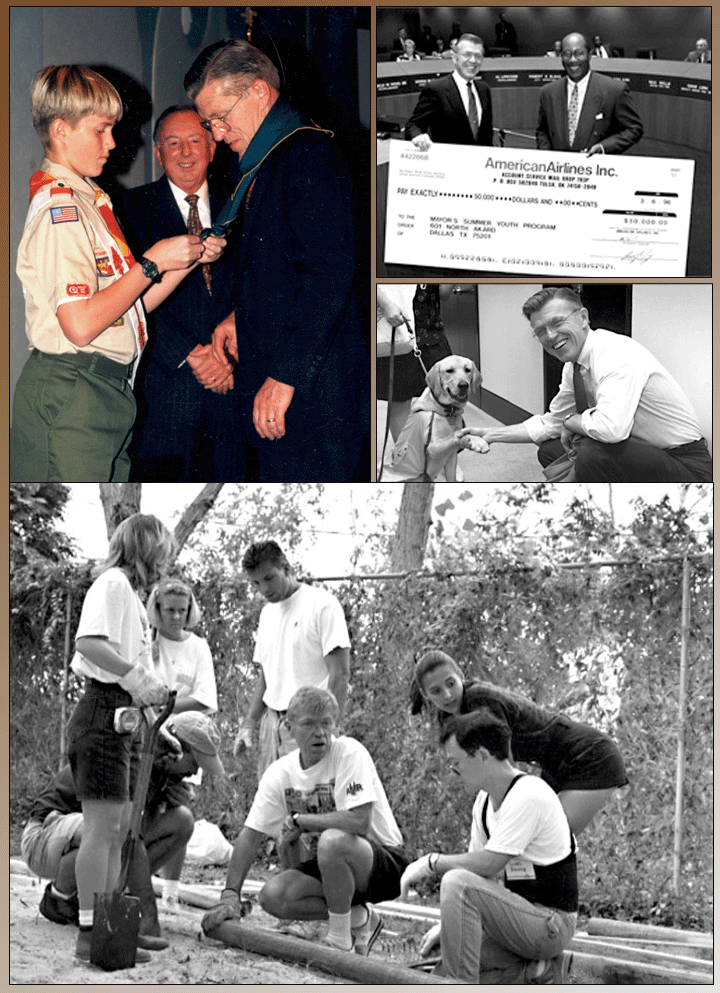
Corporate public relations boilerplate
photographs are fairly common stuff, and no doubt during
his 25-year career at American Airlines, volumes were
created. However, something unexpected emerges here. Notice
the unqualified joy on the face of Bob Crandall at various
corporate and American Airlines-inspired functions. Whether
he was busy creating one of the truly great airlines of
the world, performing community service, or having a good
time, Bob showed up to party. |
Statistics are often employed to underscore
opinion. Crandall brought forth his figures as a shocker.
Turning the calendar back to
1959 when American scheduled its first transcontinental B707
flight (LAX-JFK), the carrier planned a block time of 4:45
westbound and 4:00 eastbound. Today’s times are 6:31
and 5:40, respectively—a deterioration of 30%. Said
Crandall: “I cannot tell you how much of that deterioration
is due to operating at less than design speeds to save fuel
and how much to airways and runway congestion, but I can tell
you that reducing the impact of congestion will produce a
handsome financial and environmental return on whatever investment
is required.”
There are “common-sense
steps” that need to be taken. But Crandall is frankly
“astounded’ by positions taken in some quarters
of the business. He hit those who rejected compromises for
the “common good” as well as a Congress “unwilling
to offend anyone”. He cited Bill Shuster, chairman of
the House Transportation and Infrastructure Committee, who
asked industry participants to ignore “petty politics”
and lend support to his effort at a “transformational”
bill.
It’s high time for the
United States to add speed to its progress toward completion
of “next-gen (advanced air traffic management”
or ATM), which provides many benefits. He urged eliminating
the ATC from the FAA and build a self-supporting corporation
to take over the ATC function. With the ATC out of the FAA,
other choices are required: How to pay for ATC activities.
How to finance other FAA functions? How to govern the new
ATC? Crandall suggested that predecessors have shown “ways
that work”.
Major airports are the recipients
of about half the Airport Improvement Program’s $3.5
billion a year. Major commercial airport operators are on
record that they are willing to surrender AIP as a replacement
for higher PFCs. The airlines, however, are not buying this.
Their preference is to pay for newer and more capacious facilities
via higher rental charges and landing fees. Crandall tends
to favor the airports’ side of the argument, holding
that a GAO study shows that the impact of higher PFCs and
higher charges have “little impact on the volume of
travel. And many international airlines, as well as IATA,
are of the opinion that facility charges should be borne by
the traveler. To be sure, Crandall proposed what he believed
to be “a good deal”. This would involve exchanging
higher PFCs for air and building provisions to give carriers
some protection from airport “grandiosity”!
Turning to security, American’s
former boss eyed its “hassles and costs”. He declared
that over the years TSA has “grown enormously”
and has done “little to identify ineffective aspects
of its operations”. Today, more than 50,000 TSA employees
are performing their duties at more than 450 airports. The
cost to travelers and taxpayers is $7.5 billion a year.
According to Crandall, “a
lot of that is simply “wasted”. Behavior detection
officers (BDOs) cost TSA $200 million a year. A GAO report
issued in November 2013 stated that TSA had spent $900 million
on BDOs since the program’s inception, but had not kept
a single terrorist out of an airport or off an airplane”.
Nor did Crandall’s critique
end there. There were the “several thousand” air
marshals (whose actual total is classified information) covering
roughly 10% of all flights, produced an annual average of
four arrests. A bit of arithmetic results in about $250 million
per arrest. Calling agency’s mission vital but flawed,
he urged the industry to “push Congress to take a very
hard look at TSA”.
In an abrupt shift of topic,
Crandall asserted a dire need: halting “handing our
aviation markets and our aviation jobs to foreign airlines
and service providers in other countries”. He remarked
parenthetically occasionally thinking that some of the country’s
economic policymakers have “lost track” of a basic
truth: In order to be a consumer, a priority is finding a
job. And he went on to say:
“The labor participation
rate in the United States is far lower than it has been in
prior years. Back in 1970—when I was working for TWA
before moving to American—about 68% of national income
went to labor, and the remaining 32% went to capital. Forty
years later, in 2010, those shares had become 62% for labor
and 38% for capital, which means that about $1trillion had
moved from the labor column to the capital column. As income
flowed away from labor, household incomes atrophied. Between
1989 and 2013, median household income didn’t increase
at all. These dreadful numbers of course, simply underscore
how dramatic income inequality has become. There are many
reasons for these changes . . . However, I will note that
some of the damage can be attributed to the misuse of Open
Skies negotiations by the United States government and abuse
of Open Skies treaties by some of the countries with whom
Open Skies were agreed”.
Over the past 23 years, the
United States has signed Open Skies pacts with 111 foreign
governments. Each of these negotiations was approached “with
the attitude that any Open Skies agreement is consistent with
the best interests of the United States”. Crandall admitted
that he never agreed with that approach, holding there had
been a few agreements, which were, at the time they were signed
and in ensuing years, “clearly contrary to the interests
of U.S. carriers”.
Bluntly expressed, Crandall
is a strong proponent of good jobs which outweigh low prices.
He applauded fair and equal competition; not so, unfair and
unequal competition which permits international carriers to
“deprive U.S. airlines of the inherent advantages of
our huge home market are inappropriate and damaging to our
airlines and our economy”.
Crandall called attention to
recent concerted action by American, Delta and United who
provided Washington with hard-core information about state-owned
carriers and Qatar and United Arab Emirates are on the receiving
end of huge subsidies from their state sponsors. Arguing that
these airlines would not be commercially viable without the
subsidies, under existing circumstances they are stealing
considerable traffic. The three U.S. complainants pointed
out that unions and other employee protections normal in U.S.
industry are prohibited in Qatar and UAE. He termed “nonsense”
charges that the U.S. airlines sought ‘protected markets”.
The decisions and practices of the Persian Gulf airlines,
Crandall said, may in the long pull, force U.S. carriers to
withdraw from many international routes.
In a final shot, Robert Crandall
declared, “we can and should end the charade of the
assailed Gulf carriers”. He expressed hope it happens
soon, as well as a “careful reexamination” of
all our Open Skies agreements.
Richard Malkin
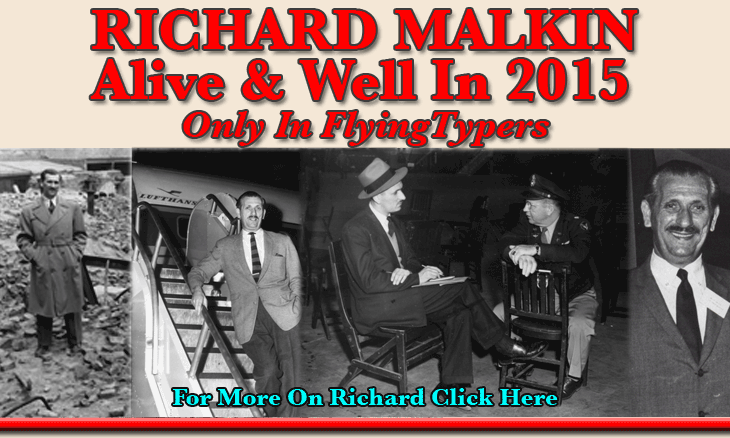 |
malkin101@aircargonews.com





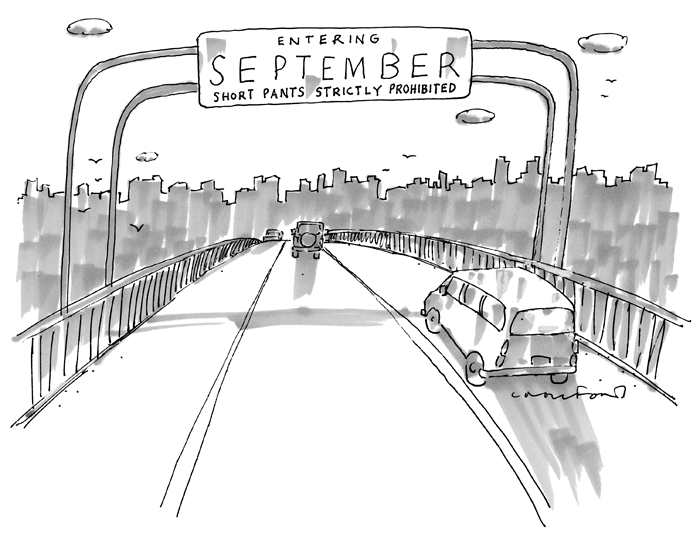







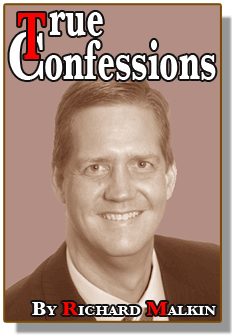
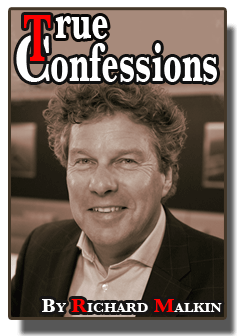
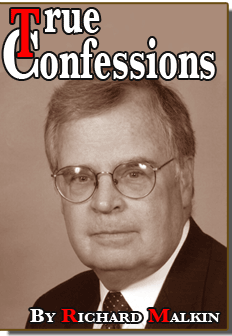
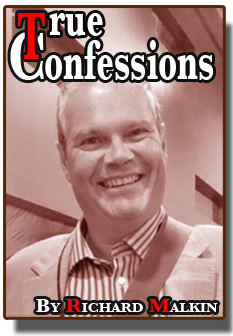
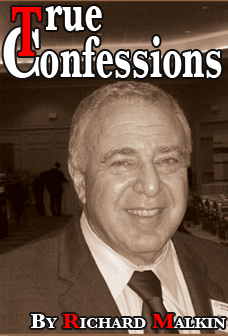
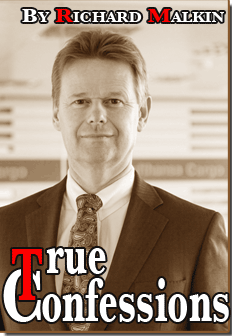
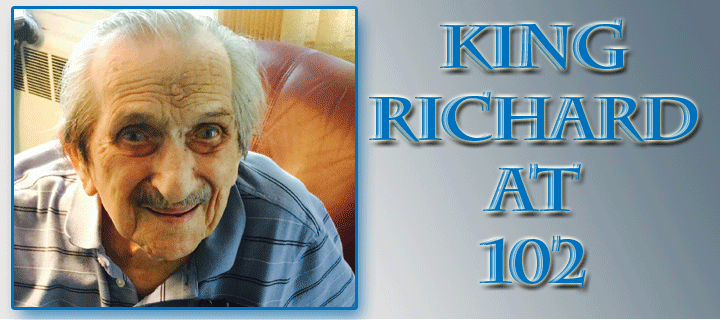
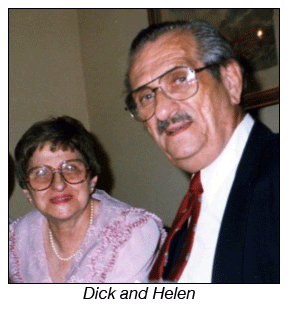 “At
102, I think about my life when I go to bed.
“At
102, I think about my life when I go to bed. 